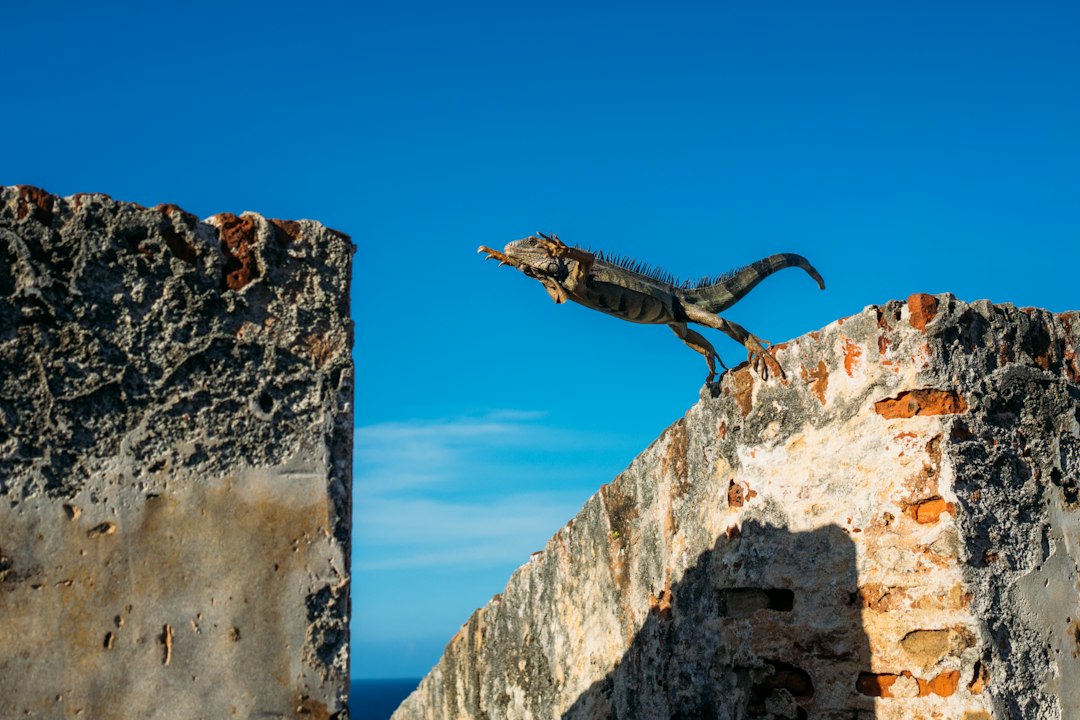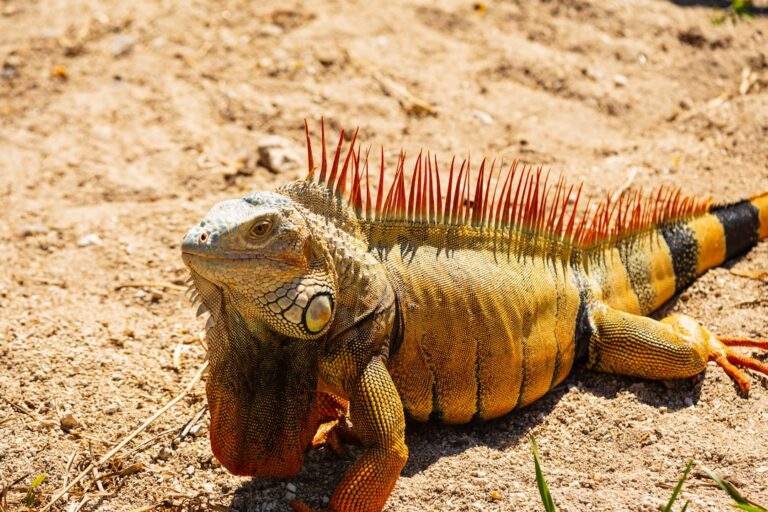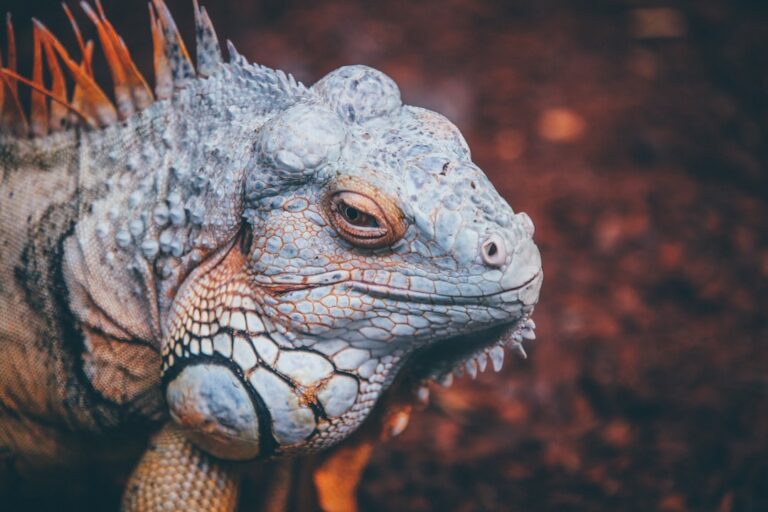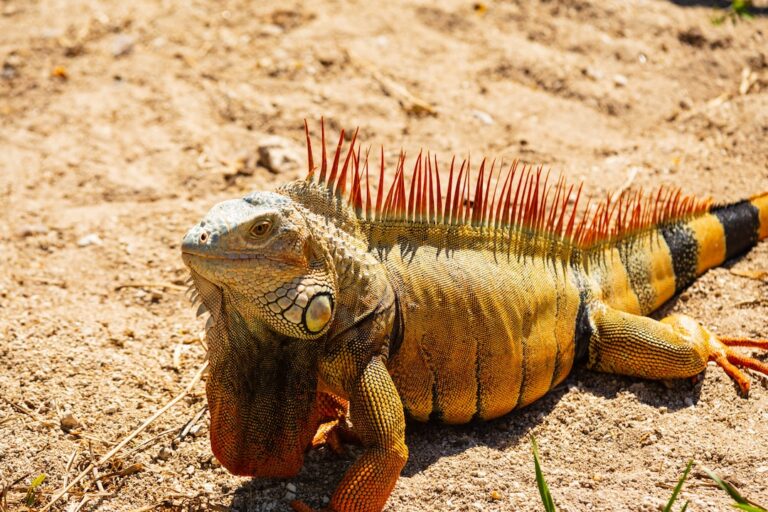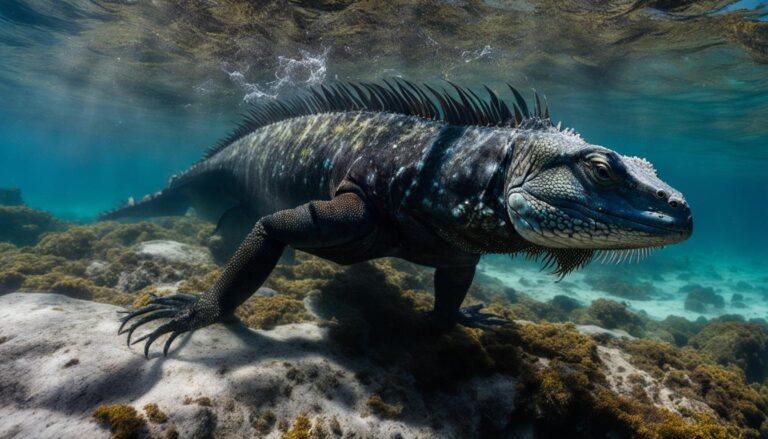Do Iguanas Jump?
Iguanas are fascinating reptiles that belong to the family Iguanidae. They are known for their distinctive appearance, with their long tails, spiky crests, and vibrant colors. Iguanas are native to tropical regions of Central and South America, as well as the Caribbean Islands. They are herbivorous creatures that primarily feed on leaves, fruits, and flowers.
One of the most remarkable physical abilities of iguanas is their jumping prowess. These reptiles are capable of impressive leaps, allowing them to navigate their environment with agility and speed. Their strong hind legs and muscular bodies enable them to propel themselves into the air with great force. This ability is not only useful for escaping predators but also for reaching higher branches in search of food.
Table of Contents
Understanding the Anatomy of Iguanas
To understand how iguanas are able to jump, it is important to delve into their anatomy. Iguanas have a unique skeletal structure that is specifically adapted for climbing and jumping. Their long tails serve as a counterbalance, allowing them to maintain stability while in mid-air. Additionally, their powerful hind legs provide the necessary force for propelling themselves off the ground.
The muscles in an iguana’s legs are also crucial for its jumping ability. These muscles are highly developed and allow for explosive bursts of energy. The tendons in their legs act as springs, storing and releasing energy during a jump. This combination of strong muscles and elastic tendons enables iguanas to achieve impressive heights and distances when leaping.
Can Iguanas Jump? Debunking Common Myths
There are several myths surrounding the jumping ability of iguanas that need to be addressed. One common myth is that iguanas can jump incredibly high, even reaching heights of several feet or more. While it is true that iguanas are capable of impressive jumps, their actual jumping height is often exaggerated. Scientific studies have shown that the average jumping height for an iguana is around 3 to 4 feet.
Another myth is that iguanas can jump from tree to tree with ease. While iguanas are skilled climbers and jumpers, they are not capable of leaping from one tree to another in a single bound. Their jumps are typically shorter distances, allowing them to move between branches within the same tree or reach higher branches within their immediate vicinity.
Factors that Affect an Iguana’s Jumping Ability
Several factors can affect an iguana’s jumping ability. Age is one such factor, as younger iguanas tend to be more agile and have more energy for jumping. As iguanas age, their muscles may weaken, and their jumping ability may decrease.
Size and weight also play a role in an iguana’s jumping ability. Larger and heavier iguanas may not be able to achieve the same heights or distances as smaller ones. This is due to the increased strain on their muscles and the added weight they need to lift off the ground.
The overall health of an iguana can also impact its jumping ability. If an iguana is sick or injured, it may not have the strength or energy to jump as effectively. It is important to ensure that an iguana is in good health before expecting it to perform any jumping activities.
The Benefits and Risks of Jumping for Iguanas
Jumping provides several benefits for iguanas. Firstly, it allows them to exercise their muscles and maintain their overall physical fitness. Regular jumping helps to strengthen their leg muscles and keep them agile. It also provides mental stimulation, as it allows them to explore their environment and engage in natural behaviors.
However, there are also risks associated with jumping for iguanas. One of the main risks is the potential for injury. If an iguana jumps from a great height or lands on a hard surface, it can sustain fractures or other injuries. It is important to provide a safe environment for jumping, with soft surfaces or cushioning materials to minimize the risk of injury.
Jumping can also be stressful for iguanas, especially if they are not accustomed to it. Some iguanas may become anxious or fearful when asked to jump, which can lead to stress-related health issues. It is important to introduce jumping gradually and provide positive reinforcement to help alleviate any stress or anxiety.
How High Can Iguanas Jump? Exploring Their Limits
While the average jumping height for an iguana is around 3 to 4 feet, there have been instances where iguanas have demonstrated impressive jumping abilities. In the wild, iguanas have been observed leaping from tree branches to escape predators or reach higher feeding grounds. Some reports suggest that wild iguanas can jump as high as 10 feet in certain circumstances.
In captivity, there have also been instances where iguanas have displayed remarkable jumping abilities. For example, in a study conducted at a reptile park, an iguana named “Jumper” was able to jump over 6 feet in height. This exceptional jumping ability was attributed to Jumper’s young age and overall good health.
Jumping as a Form of Defense and Survival for Iguanas
Jumping plays a crucial role in the defense and survival of iguanas in the wild. When faced with a predator, such as a bird of prey or a snake, iguanas will often resort to jumping as a means of escape. Their powerful leaps allow them to quickly put distance between themselves and their would-be attackers.
In addition to escaping predators, jumping also helps iguanas find food and navigate their environment more effectively. By reaching higher branches, they can access a wider variety of food sources and avoid competition with other animals. Jumping also allows them to move quickly through their habitat, enabling them to explore new areas and find suitable nesting sites.
Training Iguanas to Jump: Is it Possible?
Training iguanas to jump is possible, but it requires patience, consistency, and positive reinforcement. The key is to start with small jumps and gradually increase the difficulty as the iguana becomes more comfortable and confident. It is important to use positive reinforcement techniques, such as rewards or treats, to encourage the iguana to jump.
One effective method for training iguanas to jump is target training. This involves using a target stick or object to guide the iguana towards a desired location or height. By associating the target with a reward, such as a treat or praise, the iguana will learn to follow the target and jump accordingly.
It is important to note that not all iguanas may be receptive to training or enjoy jumping activities. Each iguana has its own personality and preferences, so it is essential to respect their individual needs and limitations.
Tips for Creating a Safe and Stimulating Environment for Jumping Iguanas
Creating a safe and stimulating environment for jumping is crucial for the well-being of iguanas in captivity. Here are some tips to consider:
1. Provide proper lighting: Iguanas require access to UVB lighting to synthesize vitamin D3, which is essential for their overall health and bone development. Ensure that the lighting setup in their enclosure is appropriate for their needs.
2. Maintain optimal temperature: Iguanas are ectothermic creatures, meaning they rely on external heat sources to regulate their body temperature. Provide a temperature gradient within their enclosure, with a basking spot that reaches around 95°F (35°C) and cooler areas for them to retreat to.
3. Use appropriate substrate: The substrate in the enclosure should be soft and cushioned to minimize the risk of injury during jumps. Avoid using hard or abrasive materials that could harm the iguana’s feet or cause discomfort.
4. Offer plenty of climbing opportunities: Iguanas are natural climbers, so it is important to provide them with ample branches, logs, or other climbing structures within their enclosure. This will encourage natural behaviors and provide opportunities for jumping.
5. Supervise jumping activities: When allowing an iguana to jump outside of its enclosure, always supervise the activity to ensure their safety. Remove any potential hazards from the area and provide a soft landing surface.
The Fascinating World of Iguanas and Their Jumping Abilities
In conclusion, iguanas are remarkable creatures with impressive jumping abilities. Their unique anatomy, including their strong hind legs and muscular bodies, enables them to achieve great heights and distances when leaping. While there are common myths surrounding their jumping ability, scientific evidence suggests that their actual jumping height is around 3 to 4 feet on average.
Jumping provides several benefits for iguanas, including exercise, mental stimulation, and the ability to navigate their environment more effectively. However, there are also risks associated with jumping, such as the potential for injury or stress. It is important to create a safe and stimulating environment for iguanas to jump in captivity and to introduce jumping activities gradually.
Overall, the world of iguanas and their jumping abilities is a fascinating one. By understanding their anatomy, debunking common myths, and providing a suitable environment for them to jump, we can appreciate and admire these incredible reptiles even more.
If you’re curious about the fascinating world of reptiles, you might be interested in an article titled “Can Iguanas Breathe Underwater?” This informative piece explores the unique respiratory system of iguanas and delves into their ability to stay submerged for extended periods. To learn more about this intriguing topic, check out the article here.

